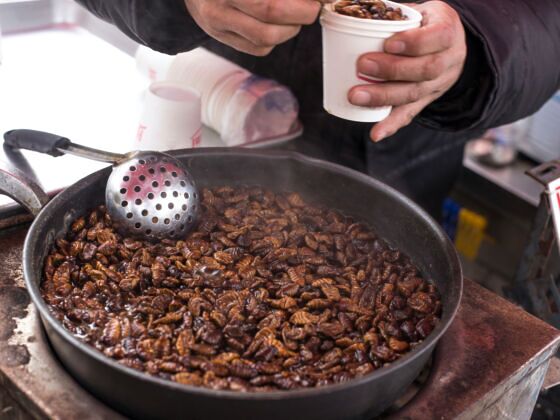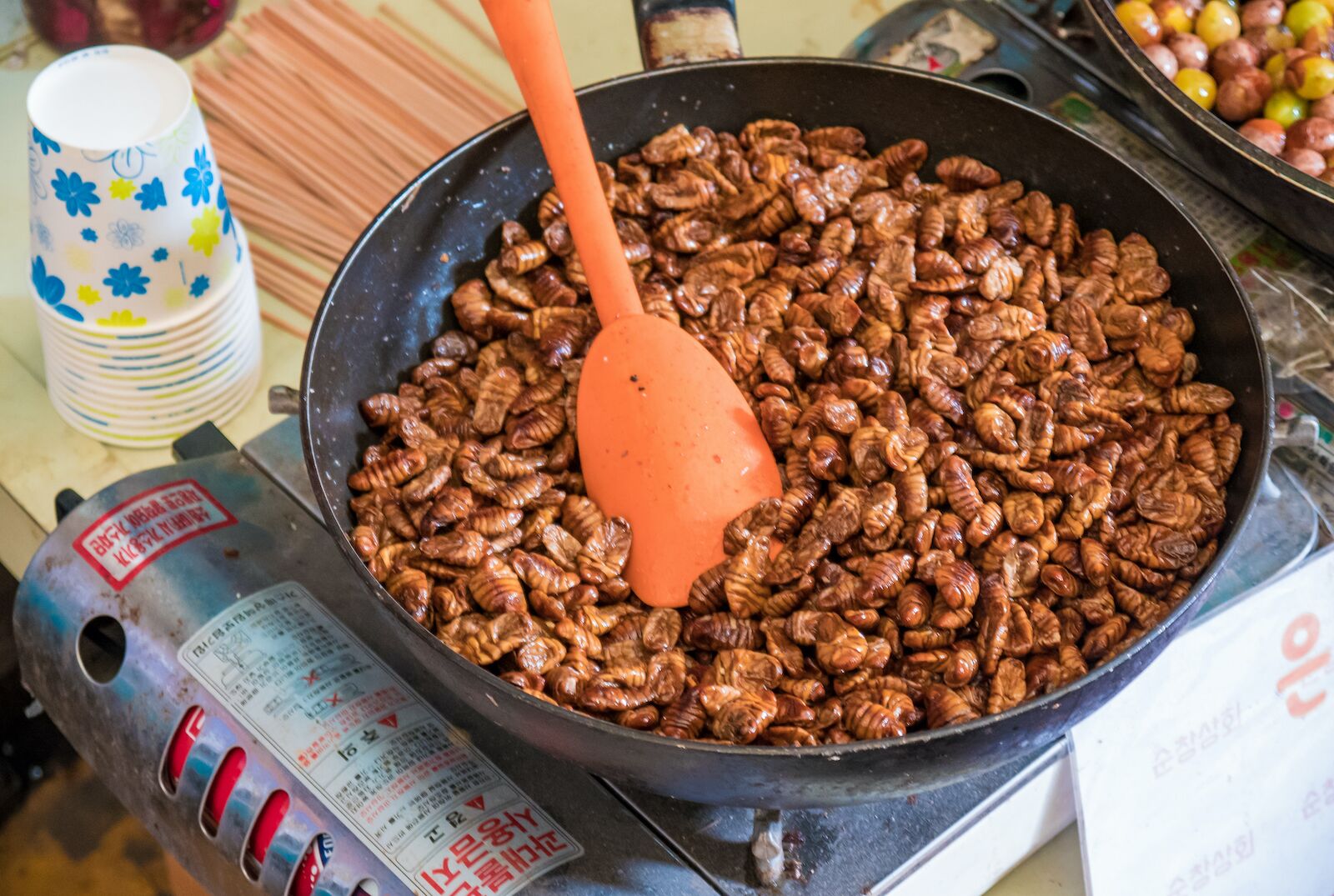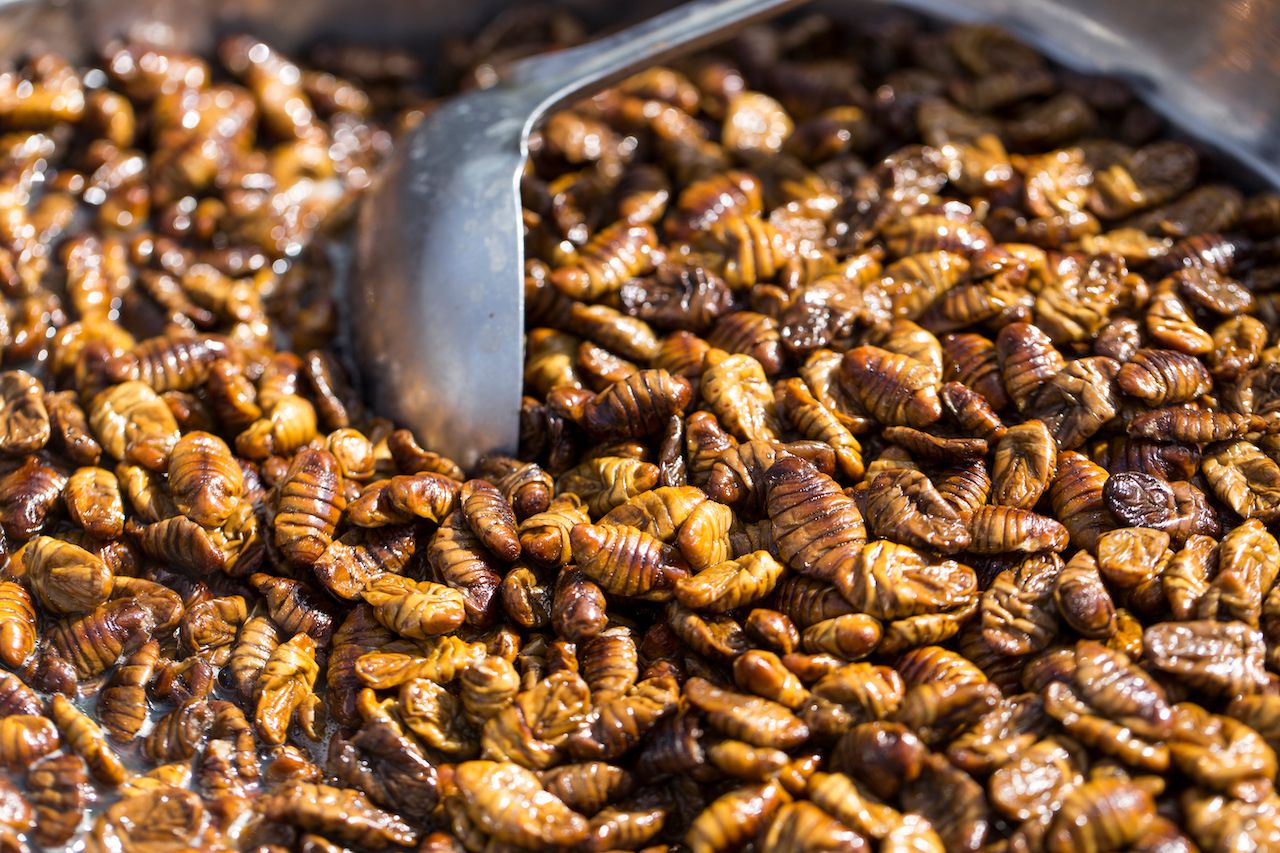Every cuisine has its secrets — ingredients that don’t get exported, offerings that live off-menu, street foods that visitors haven’t heard of until they arrive in a new country. In recent years, South Korean cuisine has enjoyed a boom in popularity. While you probably know your bibimbap from your bulgogi by now, it’s likely you’ve never heard of, let alone tried, beondegi – especially if you hail from a Western country.
Beondegi are silkworm pupae. Bugs simply aren’t a part of mainstream cuisine in Europe and North America, but even among Koreans, beondegi have, at best, a mixed reputation. Some people love them. Others hate them. Chef and writer Seoyoung Jung tried them when she was seven. “I threw up and cried,” she tells Matador Network. “After that, I can’t eat it.”
In a video about beondegi, YouTuber Angela Minji Kim’s Korean grandpa spits his out when he tries it. Her dad, though, is into them. (The writer’s Korean dog flatly turned it down when offered).


